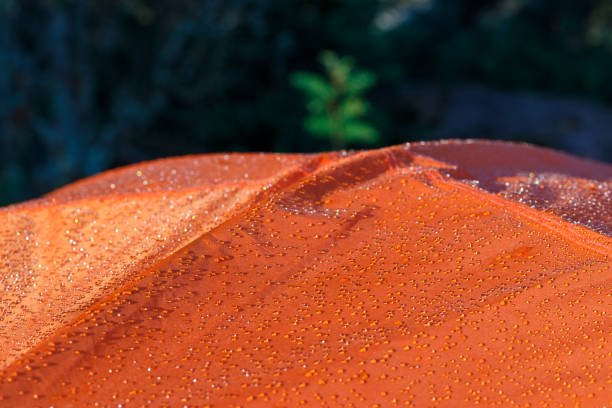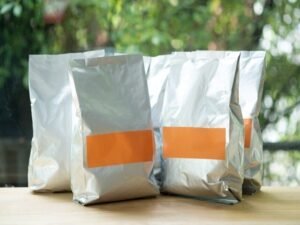As an outdoor enthusiast, keeping your tent dry inside is crucial for comfort and performance. Waterproof tent sprays provide an easy solution to restore and improve water repellency on tent fabrics. This comprehensive guide covers everything you need to know about waterproof tent sprays and how to use them effectively.
What is a Waterproof Tent Spray?
Waterproof tent spray is a liquid coating designed to be applied to tent fabrics, improving their ability to repel water. The spray contains durable water-repellent (DWR) chemicals that prevent tent seams and fabric from absorbing moisture.
The active ingredient in most tent sprays is a fluoropolymer or polyurethane. When sprayed on, a thin chemical layer bonds to fabric fibers, causing water to bead up and roll off the tent surface while maintaining breathability.
Sprays are quick-drying and wash off easily with mild soap and water. Reapplication every few months or after heavy use maintains optimal water-beading effects.
Benefits of Using a Tent Waterproofing Spray
Applying a waterproofing spray to your tent offers several useful advantages:
- Restores DWR protection that wears off over time from sun and abrasion
- Allows water to roll off fly and seams instead of soaking through
- Keeps tent interior drier during wet weather camping
- Prevents darkened water stains on fabric that affect aesthetics
- Adds UV resistance to reduce sun damage to tent materials
- Helps tent fabric withstand moisture shrinkage and potential leaks
- Allows the tent to dry faster by preventing water absorption
- Extends the overall lifespan of the tent by reducing deterioration
- Provides insurance against tent leaks as seam tape ages
For maximum performance in wet conditions, tent waterproofing spray is a valuable maintenance step.
When to Use a Tent Waterproofing Spray
Aim to apply waterproof spray in these situations for best results:
- Before first using a brand-new tent
- After cleaning the tent with harsh cleaners that may strip DWR
- Once the existing water beading effect starts fading
- Before camping trips when heavy rain or snow is expected
- After several years of normal tent use as a preventative measure
- Anytime the tent fabric absorbs water instead of beading up
- If small leaks have started to form in older tent seams
- To restore exterior water repellency after long-term storage
- When transitioning a tent out of long-term storage before reuse
- Periodically as part of regular tent maintenance 1-2 times per year
Routine waterproofing maintains optimal performance and lifespan. Don’t wait until major leaks develop!
What to Look for in a Tent Waterproofing Spray
With so many formulas available, here are the key features to compare:
- Effective DWR chemicals – Common options are fluoropolymers and polyurethanes. Avoid wax-based.
- UV resistance additives – Prevents sun damage to materials.
- Ease of application – Sprays are easier than wash-in liquids or rubbing-in balms.
- Fast drying – Quickly cures to prevent transfer to other surfaces.
- Non-flammable – Important for tent safety.
- Eco-friendly – No harsh VOCs or heavy metal catalysts.
- Light solvent odor – Dissipates quickly after application.
- Compatible fabrics – Works on nylons, polyesters, canvas, and cotton blends.
- Brand reputation – Trusted outdoor brands demonstrate proven product performance.
- Price – Higher-end sprays cost $15-$30 while budget options are under $10.
Focus on convenient spray formulas with durable waterproofing compounds for tents. Avoid wax or oil-based options.
How to Apply Waterproofing Spray to a Tent
Applying waterproofing spray to a tent is a simple process:
Step 1: Set Up Tent
Pitch tent and stake out fly on clean, dry ground. Remove any accessories.
Step 2: Clean Surface
Use a damp cloth to wipe away any dirt or debris that could impede spray bonding.
Step 3: Mask Off Areas
Cover any areas like windows, vents, or mesh that you don’t want to be coated.
Step 4: Apply Spray
Holding can 6-10 inches away, apply light misting coats across the entire fly top, paying special attention to seams. Avoid saturating. Reapply additional light coats until the fabric is fully covered.
Step 5: Let Cure
Allow the tent to dry completely before further handling. Drying times range from 10 minutes to 1-2 hours.
Step 6: Ventilate
Allow fresh air circulation to dissipate any solvent odors before packing the tent away.
For best results, spray in dry conditions above 50°F. Multiple light coats work better than one heavy application. Periodically re-treat to maintain effects.
Restoring an Old Tent’s Water Repellency
For an older tent that has started leaking, soak the tent fabric with spray concentrate on all seams and top surfaces. This allows the DWR chemicals to fully penetrate the material rather than just coat the exterior. Let soak for 5-10 minutes then use a sponge or rag to gently work the spray further into the fibers. Allow to fully cure before reassembling. Severely delaminated or abraded fabrics may need professional re-treatment for full waterproof restoration.
DIY Homemade Waterproofing Spray Recipes
Looking to save costs by making your tent waterproofer? Here are some effective DIY recipes to try:
METHOD 1
- 1 cup beeswax pellets
- 300ml warm water
- 2 Tbsp natural soap like Castile
- Spray bottle
Melt beeswax in water and stir until dissolved. Mix in soap. Allow to cool before pouring into the spray bottle. Shake before use.
METHOD 2
- 2 parts boiled linseed oil
- 1 part mineral spirits
- Spray bottle
Mix ingredients and pour into a spray bottle. Linseed oil nourishes fabrics while repelling moisture.
METHOD 3
- 1/3 bar soap grated finely
- 2 cups hot water
- 1 Tbsp baking soda
- Spray bottle
Dissolve soap shavings in hot water. Mix in baking soda. Let cool before transferring to a spray bottle. Shake before use.

Applying a UV Protectant Spray
For full protection, combine a UV shielding spray with your waterproofing:
- Use a UV-blocking spray made for outdoor fabrics. Look for UV-A and UV-B protection.
- Lightly spray UV protectant over the entire tent surface before applying waterproofing coats.
- UV protection preserves fabric integrity and prevents premature breakdown.
- Reapply UV spray anytime the tent surface gets cleaned.
The best defense is layering both UV and waterproofing protection to maximize tent performance.
Waterproof vs Water Resistant Explained
You’ll notice tents and sprays described as either waterproof or water-resistant. What’s the difference?
Waterproof means water cannot penetrate the surface at all, like a rain jacket material. It is completely impermeable to moisture. True waterproofing is difficult for tent fabrics to achieve.
Water resistance allows some water absorption while impeding or slowing the penetration of moisture. Tent fabric and DWR coatings are designed to be water-resistant rather than 100% waterproof.
For most tents, water resistance is sufficient to keep the interior dry under normal conditions. Seam tape also helps prevent leaks where stitching penetrates the fabric. Full waterproofing like a plastic tarp would sacrifice ventilation. Careful maintenance preserves the delicate balance of water resistance, breathability, and durability that tent fabric requires.
Storing a Tent After Waterproofing
After waterproofing a tent, proper storage is important:
- Allow the tent to fully air dry before packing so no moisture is trapped.
- Fold or roll the tent loosely, avoiding tight creases that can crack coatings.
- Store in a cool, dry place protected from direct sunlight.
- Unpack and air out tent occasionally if storing long term.
- Re-treat with UV and waterproofing spray before long-term storage.
Proper storage keeps the tent fabric flexible and minimizes any degradation of water-repellent coatings over time. Periodically setting up and airing out the tent can also help prevent issues.

Restoring Tent Fabric Water Repellency Over Time
With regular use, tent water resistance will gradually wear off and need restoration. Here are some best practices for maintaining performance long-term:
- Reapply DWR waterproof spray 1-2 times per year or whenever the beading fades.
- Limit harsh detergents or cleaners that deplete DWR coatings.
- Address any new fabric abrasions quickly with seam sealer.
- Store the tent loose and dry, not compressed.
- Set up an air tent regularly if stored for long periods.
- Check for early signs of UV damage like fabric discoloration or cracks.
- Repair any seam tape detachment immediately to avoid leaks.
- Consider re-treatment with wash-in waterproofing liquids every few years for a deeper protective barrier.
With proactive care, you can keep quality tent water repellent and reliable for many seasons of active use.
Tent Waterproofing Spray Product Recommendations
Ready to choose a tent waterproofing spray? Here are some top-rated options to consider:
- Nikwax Tent & Gear SolarProof – Advanced spray-on formula protects from sun, rain, and abrasion. Safe for nylons and polyesters. Added UV blockers.
- Gear Aid ReviveX Water Repellent Spray – Restores DWR on fabrics while allowing breathability. Formula blends polymers, oils, and UV inhibitors.
- Granger’s Fabsil Waterproofer – Fluorocarbon and polymer tent spray excels at beading water and preventing condensation inside the tent.
- McNett SilNet Silicone Impregnator – Premium silicone-based spray nourishes fabric fibers like cotton while creating water-beading effects.
- Atsko Silicone Water Guard – Concentrated waterproofing formula resists UV damage. Low-odor solvent. Great for canvas, nylon, and synthetics.
- Scotchgard Outdoor Water Shield – Established brand using fluoropolymers to renew water resistance. Easy to apply spray.
- 303 Products Fabric Guard – Contains UV screens to prevent sun damage. Repels spills, moisture, and stains.
- Star brite Waterproofing with PTEF – Heavy duty tent spray for extreme marine conditions. Withstands flexing and friction.
Do a small test patch when applying any new tent waterproofing brand for the first time. Follow instructions carefully for best performance.
Frequently Asked Questions
How often should you treat a tent with waterproof spray?
Plan to reapply waterproofing approximately every 3-6 months during peak camping season or 1-2 times per year for occasional users. Re-treat whenever water stops beading on the surfaces.
Where exactly should you spray the tent?
Focus spraying on the entire rain fly or outer layer, including the peaks and seams. No need to treat inside the tent body or floor. Avoid windows, screens, and vents.
Is there a risk of tent waterproofing spraying damaging the fabric?
Quality waterproofing sprays designed for outdoor fabrics will not cause damage when used as directed. Apply in proper conditions and allow to fully cure. Harsh solvents or wax-based formulas are more risky.
Can you use a tent waterproofing spray on a canvas tent?
Yes, most tent waterproofing sprays are safe for canvas tent fabric as well as synthetics like polyester and nylon. Ensure the product specifically states canvas compatibility before applying.
Should I reapply tent waterproofing after cleaning the tent?
Yes, any standard tent cleaning will remove existing DWR treatment. Make sure to re-treat with waterproofing spray after cleaning before storing the tent.
How do you restore an old tent’s water resistance if the spray doesn’t work?
For a severely delaminated older tent, try using a wash-in waterproofing treatment to deep clean and penetrate the fabric, then apply sprays moving forward for maintenance. Professional re-treatment may be needed.
Can I apply a waterproof tent spray if rain is expected?
You should only apply tent waterproofing sprays in warm, dry conditions when no rain is expected for 24 hours. The coatings require proper time to bond and cure the fabric fibers before getting wet.
Is there a non-chemical tent waterproofing option?
For a non-toxic alternative, try a beeswax-based waterproofing like Otter Wax. Although these don’t offer the same high-tech durability as synthetic polymer sprays. Reapplication is needed more often.
My Final Thoughts
Keeping your tent water repellent is crucial for performance and preventing leaks over time. Durable waterproofing sprays restore beading and protect the fabric from moisture, sun damage, and staining when applied properly. Periodic re-treatment saves money compared to replacing a moldy, leaky tent. With quality UV and waterproofing maintenance, you can trust your tent to stay dry for many seasons of adventures in the great outdoors.












